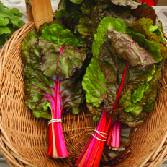-
CATEGORY ::
- All Seeds /
- All Flower Seeds /
- All Castor Beans Seeds
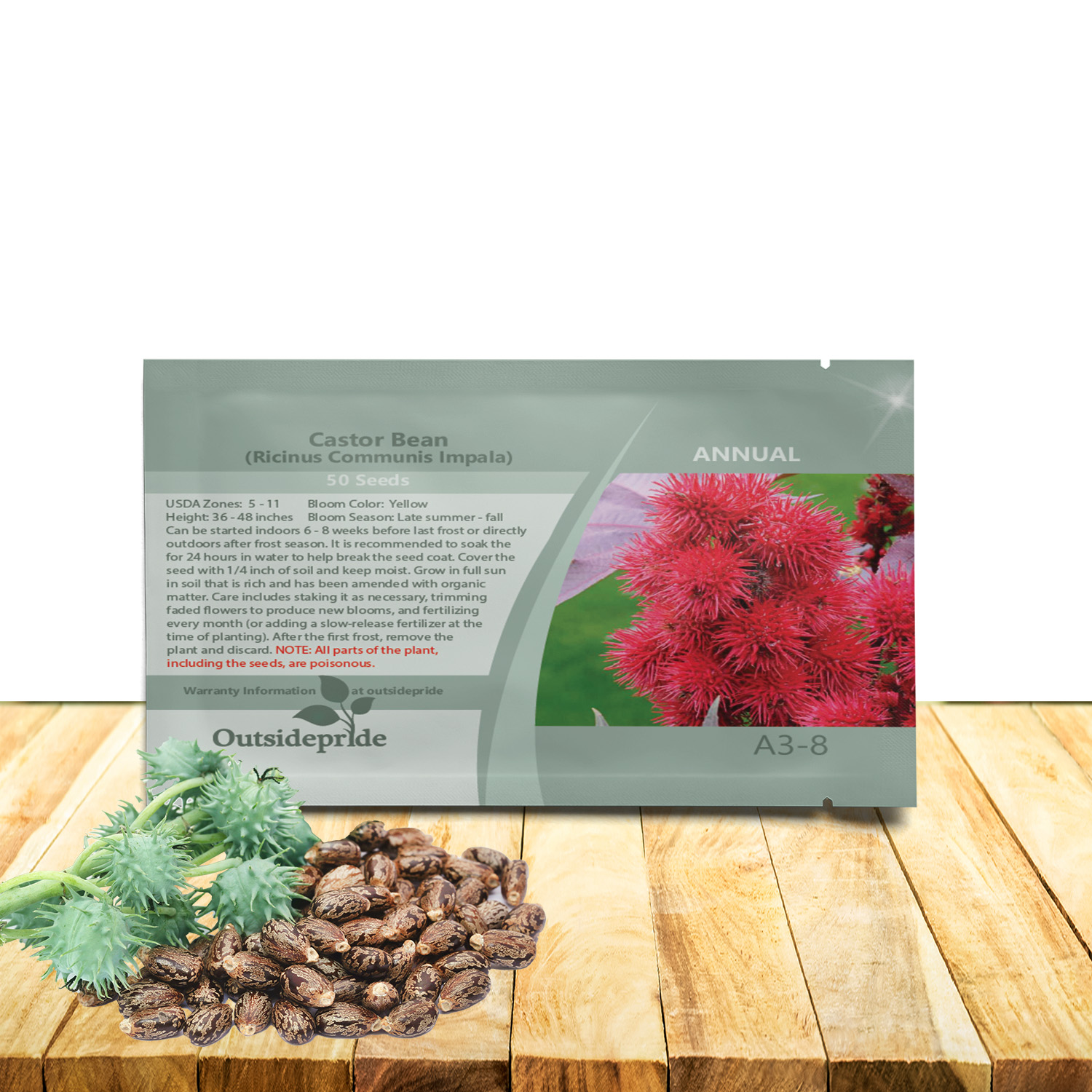

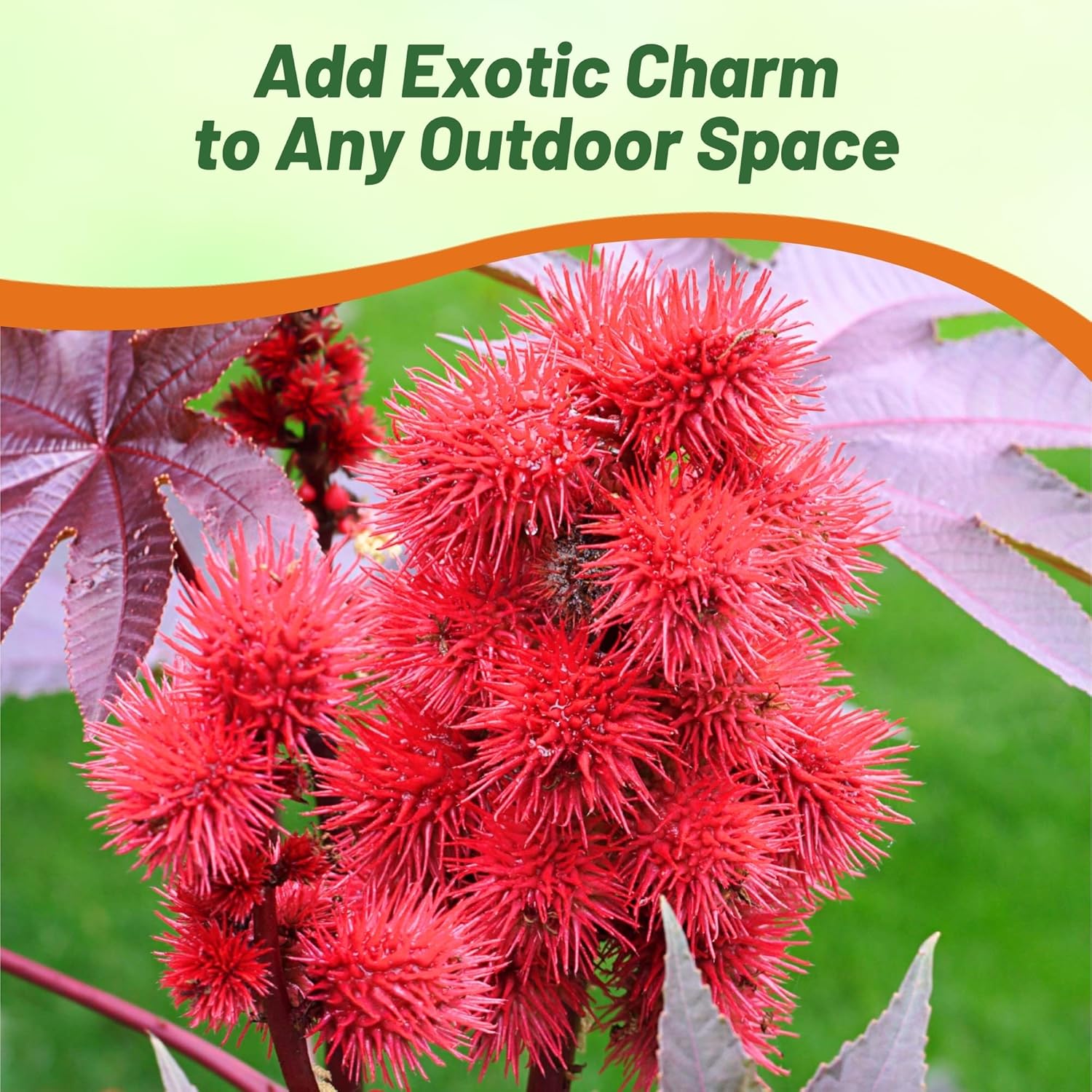
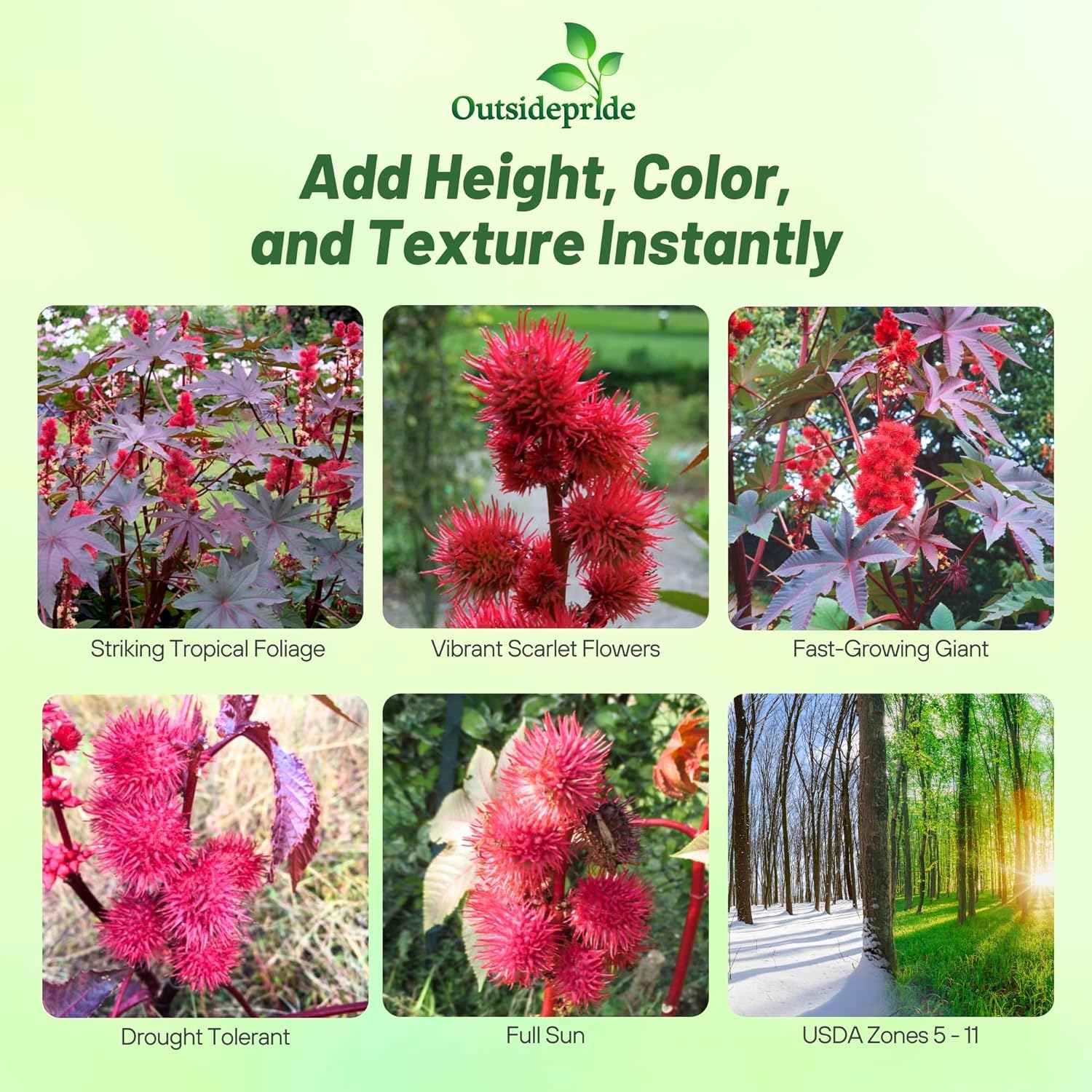
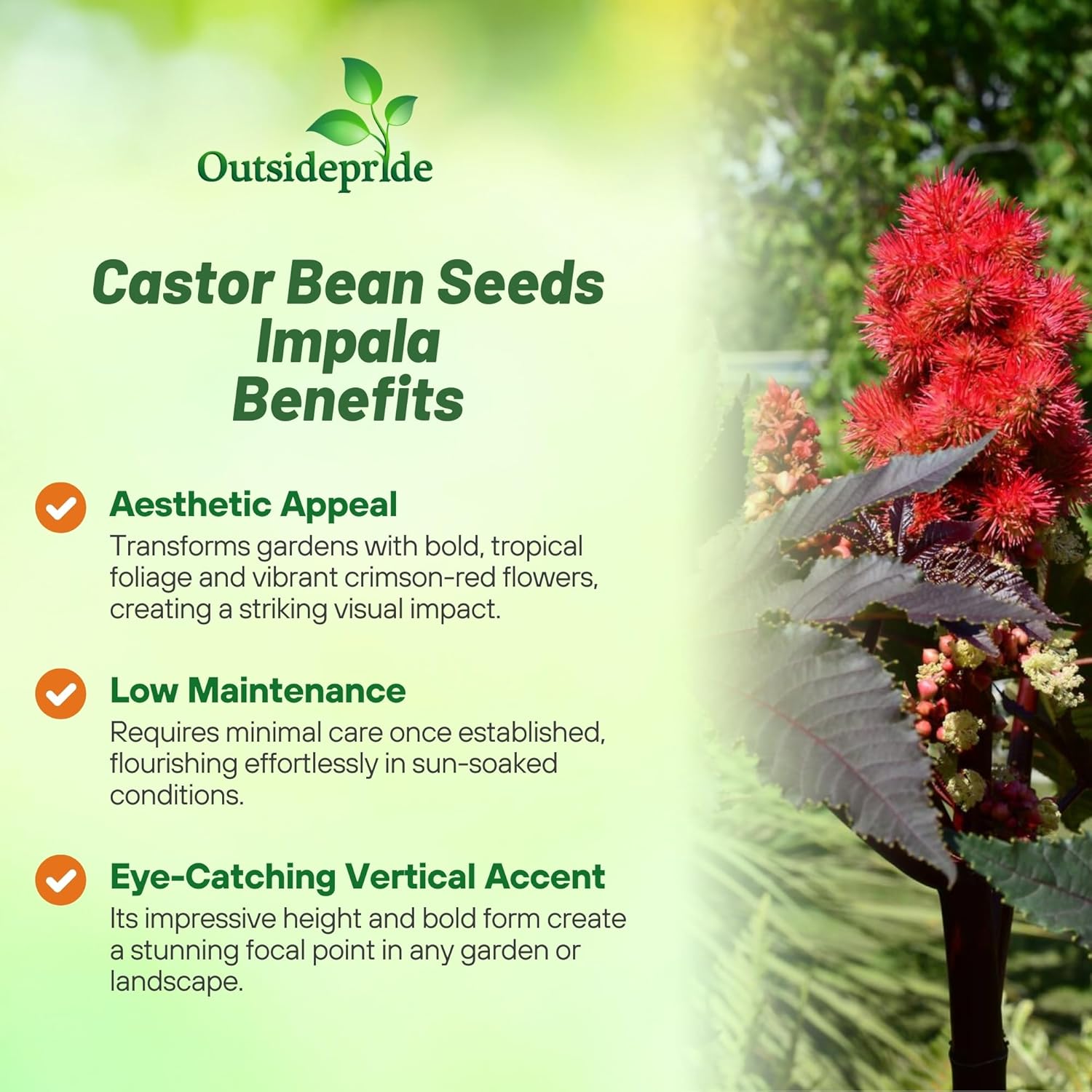
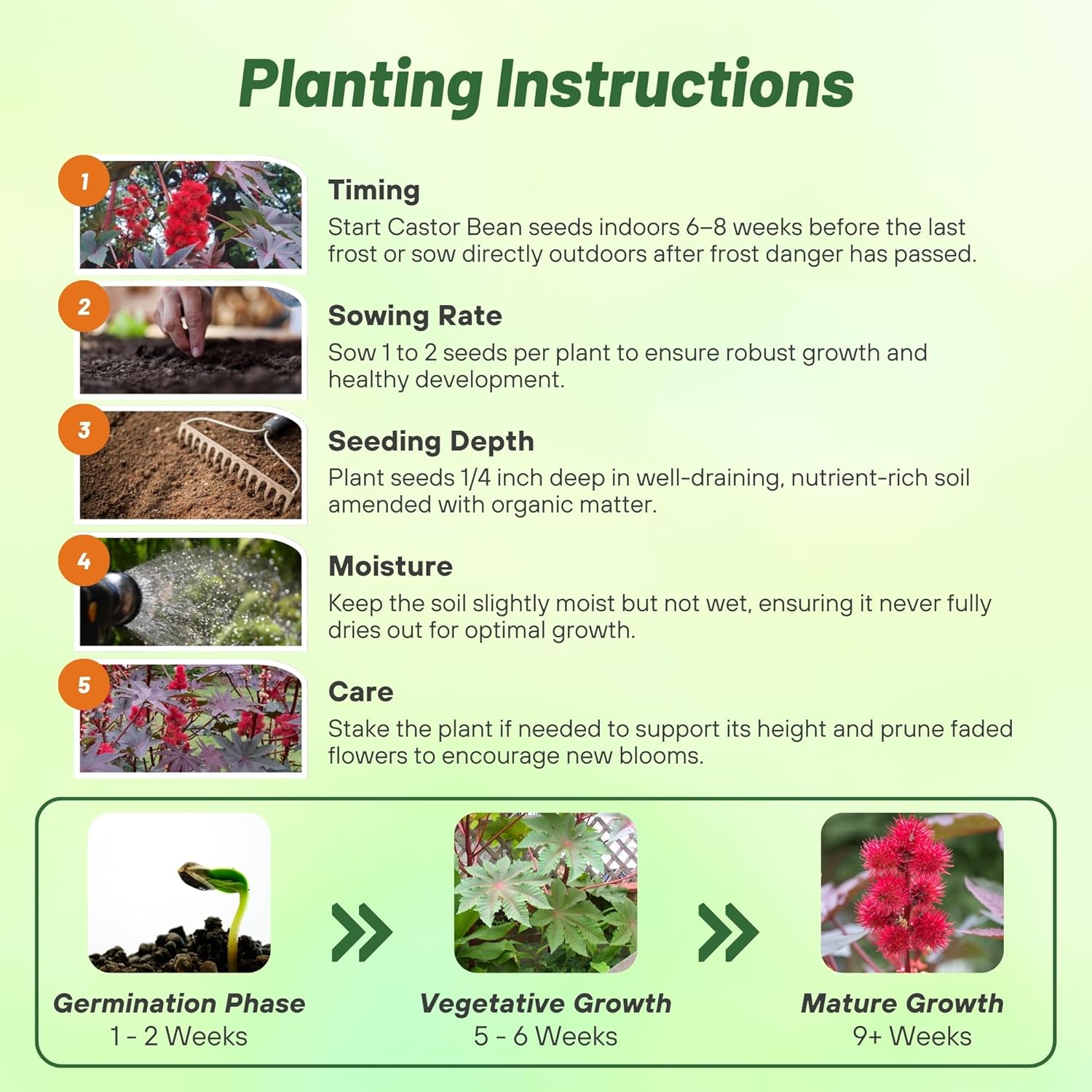


Castor Bean Seeds - Impala
About...
Castor Bean (Ricinus Communis Impala) - To add this unique tropical annual to your landscape, start Castor Bean seeds and be amazed at how fast this plant grows! Impala is tall and dramatic with huge copper-red leaves and clusters of creamy yellow blooms, followed by maroon pods.MORE CASTOR BEANS OPTIONS
Planting Directions
TEMPERATURE
65 - 70F
AVERAGE GERM TIME
7 - 14 days
LIGHT REQUIRED
Yes
DEPTH
1/4 inch
SOWING RATE
1 - 2 seeds per plant
MOISTURE
Keep soil slightly moist but not wet, avoid soil drying out
PLANT SPACING
24 - 36 inches
NOTE
Seeds are poisonous, DO NOT eat
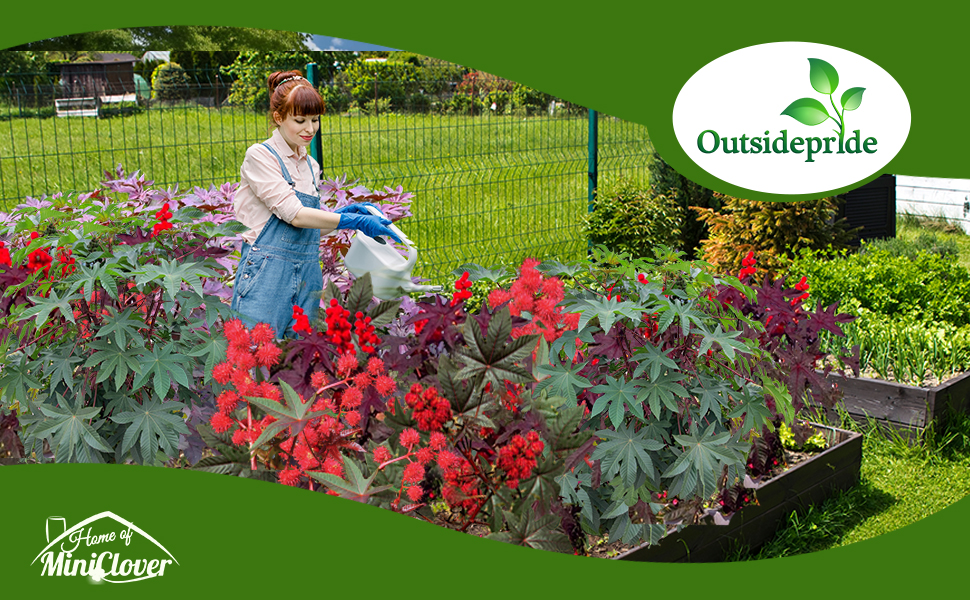
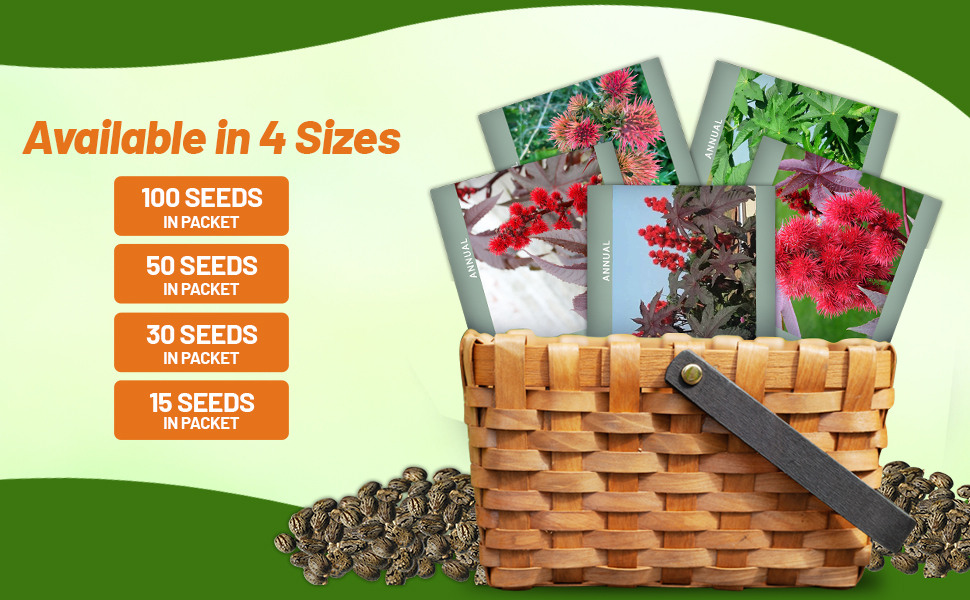
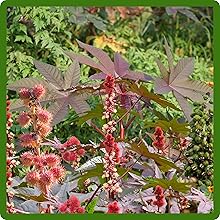
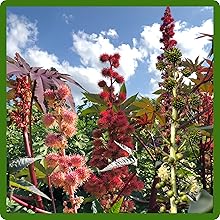
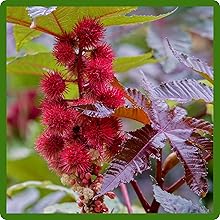
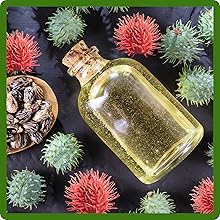
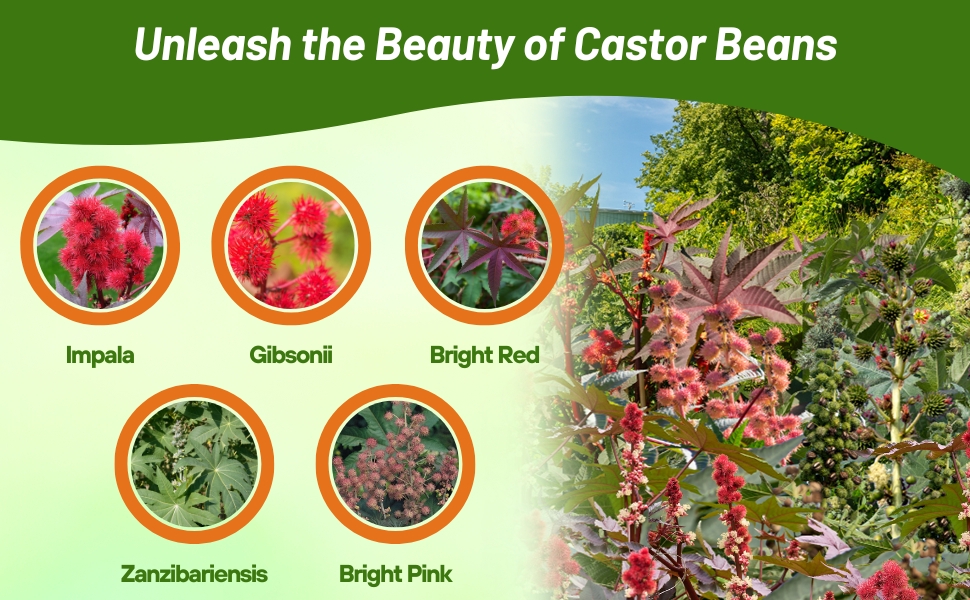
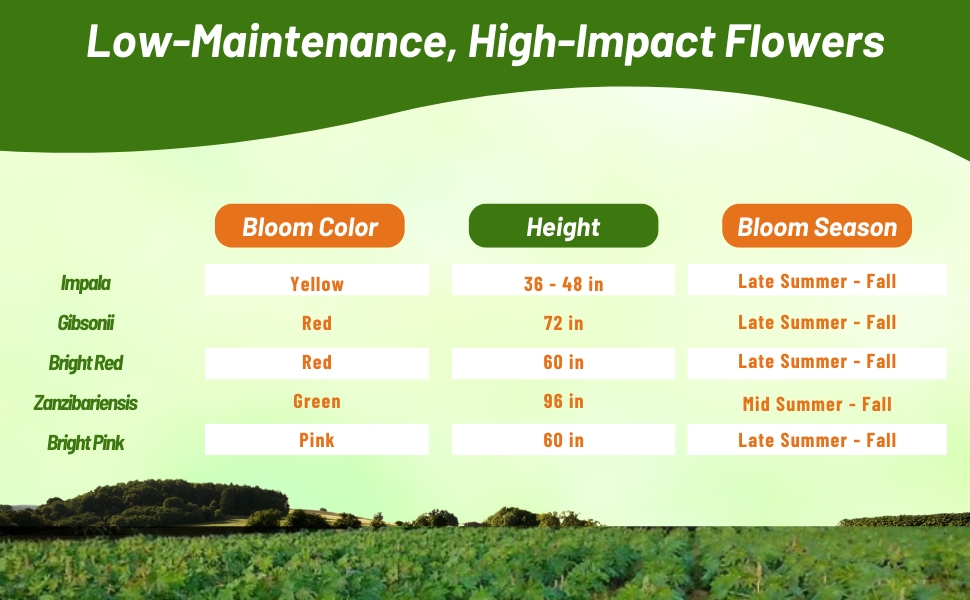
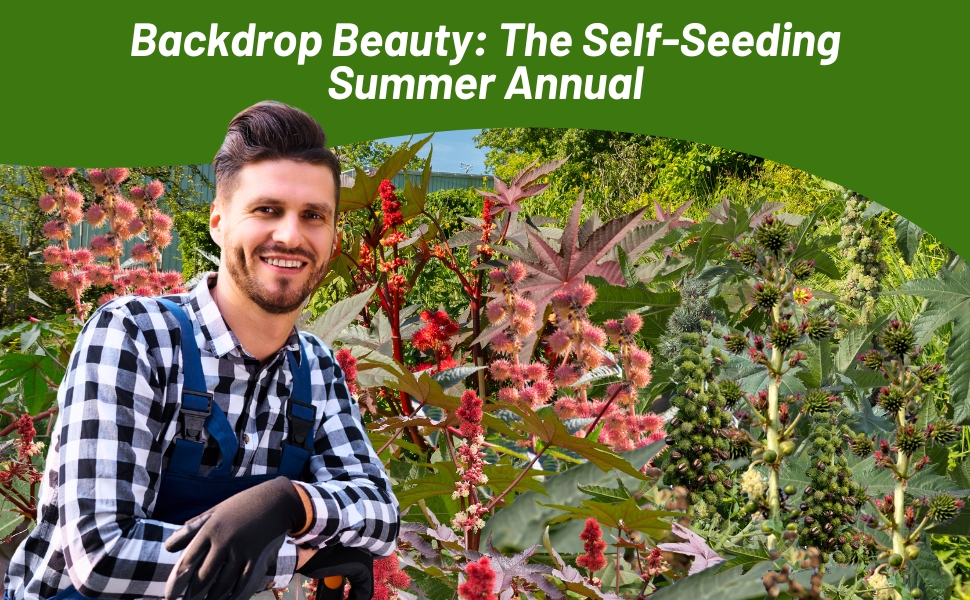
Castor Bean (Ricinus Communis Impala) - To add this unique tropical annual to your landscape, start Castor Bean seeds and be amazed at how fast this plant grows! Impala is tall and dramatic with huge copper-red leaves and clusters of creamy yellow blooms, followed by maroon pods. This evergreen tropical shrub can grow so fast that it can be used as a very large and dramatic annual in the garden. Castor Oil plants are remarkably architectural and can be used very effectively in the center of island beds or at the back of large borders.
Castor Bean seeds can be started indoors 6 - 8 weeks before the last frost date or directly outdoors after frost season has passed. It is recommended to soak the Ricinus seeds for 24 hours in water to help break the seed coat. Cover the flower seeds with 1/4 inch of soil and keep moist. Grow the plant in full sun and in soil that is rich and has been amended with organic matter. Care of the Impala Castor Bean plant would include staking the plant if needed, trimming the faded flowers to produce new blooms, and fertilizing every month (or adding a slow-release fertilizer at the time of planting). In the fall after the first frost, remove the plant and discard.
NOTE: All parts of the plant, including the seeds, are poisonous. Eating the seeds may be fatal. This plant is not recommended if you have small children. Again if you have children that naturally put things into their mouths, you probably should avoid this plant. If you do decide to grow it, educate your children about the dangers of this plant.
Common Questions
Do castor bean plants come back year after year?
If you are planting in USDA Zones 9 – 11 your Castor bean plants will continue to return year after year.
Can you grow castor bean in containers?
Due to their size and quick growth habits it is not advisable to grow in containers.
Will castor bean plants repel mosquitos?
Castor bean plants have been used to repel mosquitos.
Will deer and other animals eat castor bean plants?
Most animals know to stay away from Castor bean plants. They are toxic to animals.
Planting Directions
TEMPERATURE
65 - 70F
AVERAGE GERM TIME
7 - 14 days
LIGHT REQUIRED
Yes
DEPTH
Plant seeds 1/4 inch deep
SOWING RATE
1 - 2 seeds per plant
MOISTURE
Keep soil slightly moist but not wet, avoid soil drying out
PLANT SPACING
36 - 48 inches
NOTE
Seeds are poisonous, DO NOT eat
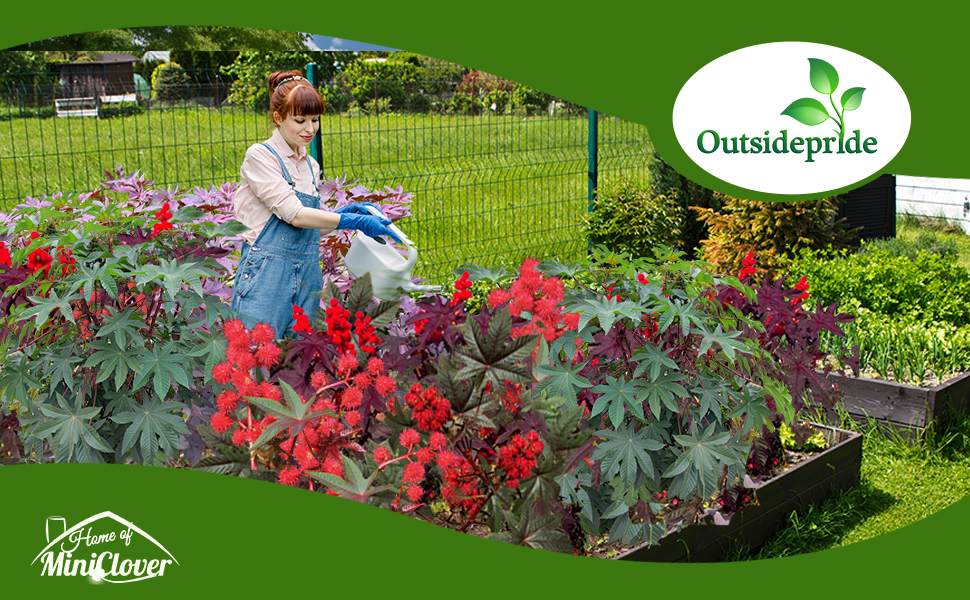
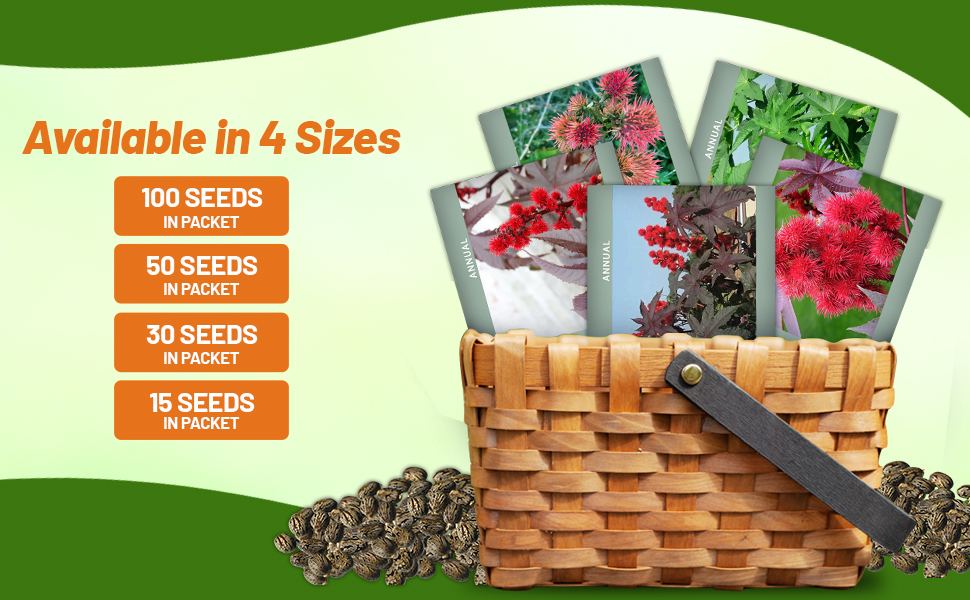
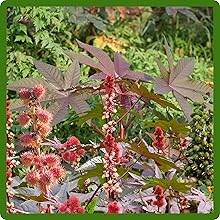
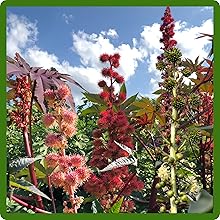
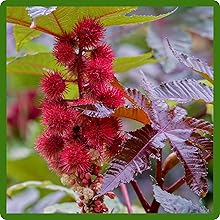
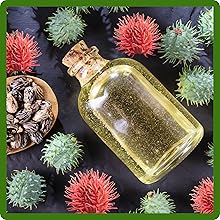
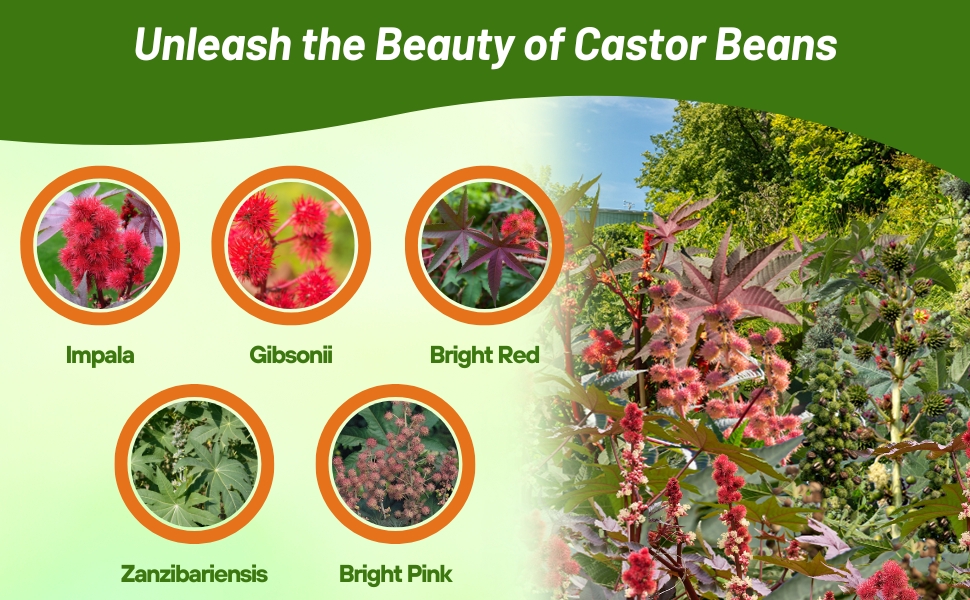
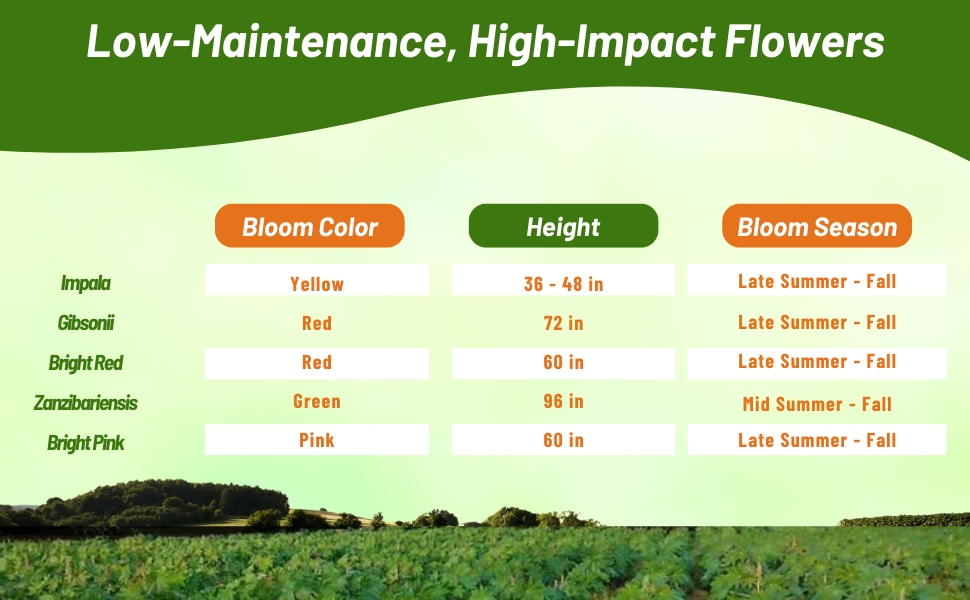
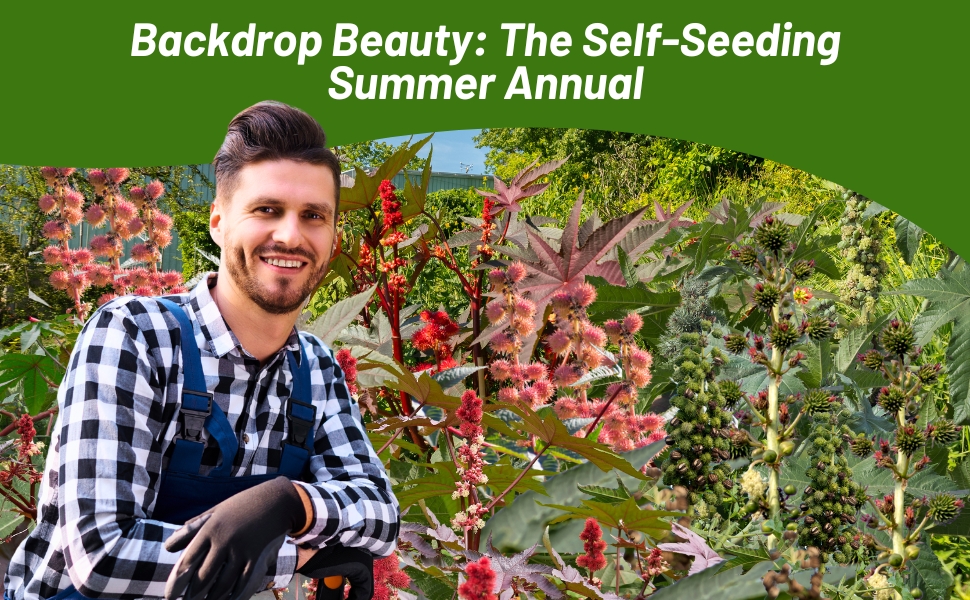
Castor Bean (Ricinus Communis Gibsonii) - Starting Castor Bean seeds is an easy and fast way to grow this incredibly beautiful annual. The Castor Oil plant is a very useful tropical foliage plant. It is grown from seed annually, easily reaching 5 feet plus in one season. Gibsonii produces a tall and dramatic plant with huge dark red leaves and stunning scarlet seed heads. To add an exotic look to your landscape, grow these flower seeds and enjoy this stunning specimen plant.
Castor Bean seeds can be started indoors 6 - 8 weeks before the last frost date or directly outdoors after frost season has passed. It is recommended to soak the Ricinus seeds for 24 hours in water to help break the seed coat. Cover the seed with 1/4 inch of soil and keep moist. Grow the plant in full sun and in soil that is rich and has been amended with organic matter. Care of the Gibson Castor Bean plant would include staking the plant if needed, trimming the faded flowers to produce new blooms, and fertilizing every month (or adding a slow-release fertilizer at the time of planting). In the fall after the first frost, remove the plant and discard.
NOTE: All parts of the plant, including the seeds, are poisonous. Eating the seeds may be fatal. This plant is not recommended if you have small children. Again if you have children that naturally put things into their mouths, you probably should avoid this plant. If you do decide to grow it, educate your children about the dangers of this plant.
Common Questions
Do castor bean plants come back year after year?
If you are planting in USDA Zones 9 – 11 your Castor bean plants will continue to return year after year.
Can you grow castor bean in containers?
Due to their size and quick growth habits it is not advisable to grow in containers.
Will castor bean plants repel mosquitos?
Castor bean plants have been used to repel mosquitos.
Will deer and other animals eat castor bean plants?
Most animals know to stay away from Castor bean plants. They are toxic to animals.
Planting Directions
TEMPERATURE
65 - 70F
AVERAGE GERM TIME
7 - 14 days
LIGHT REQUIRED
Yes
DEPTH
1/4 inch
SOWING RATE
1 - 2 seeds per plant
MOISTURE
Keep soil slightly moist but not wet, avoid soil drying out
PLANT SPACING
72 inches
NOTE
Seeds are poisonous, DO NOT eat
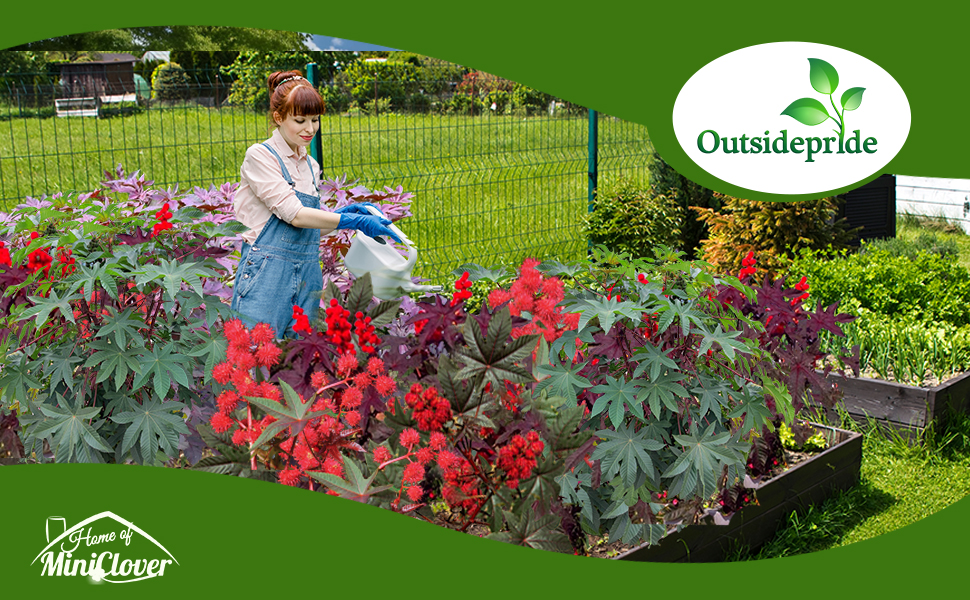
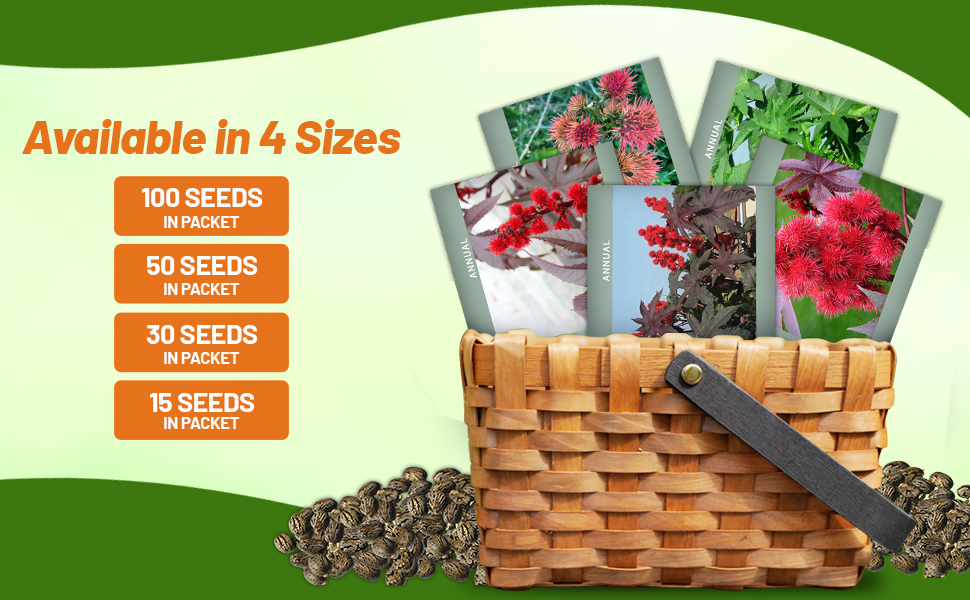
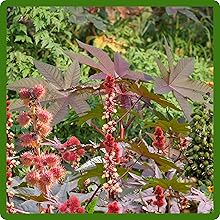
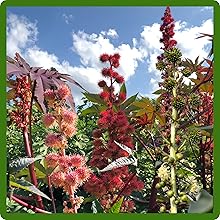
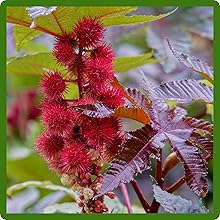

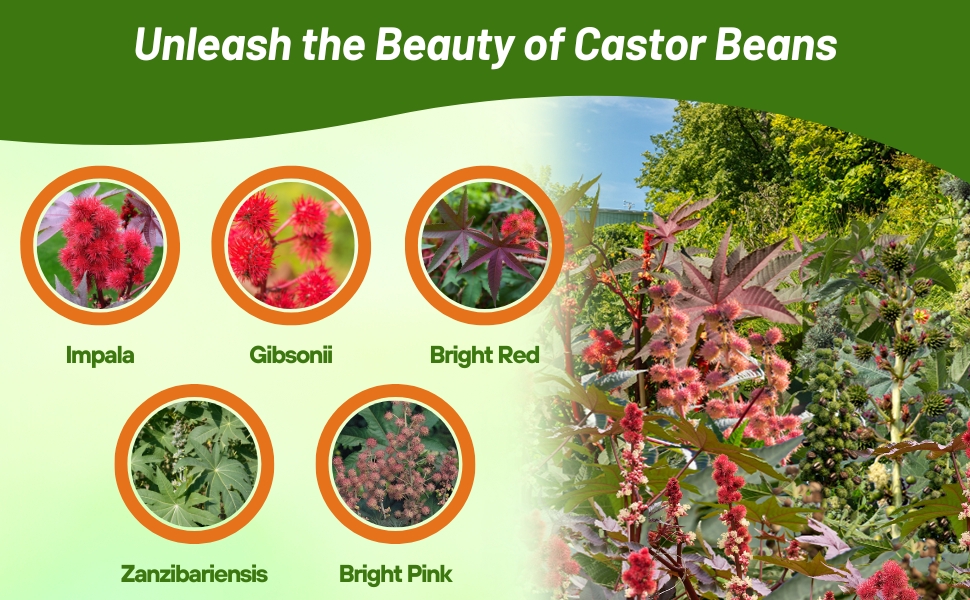
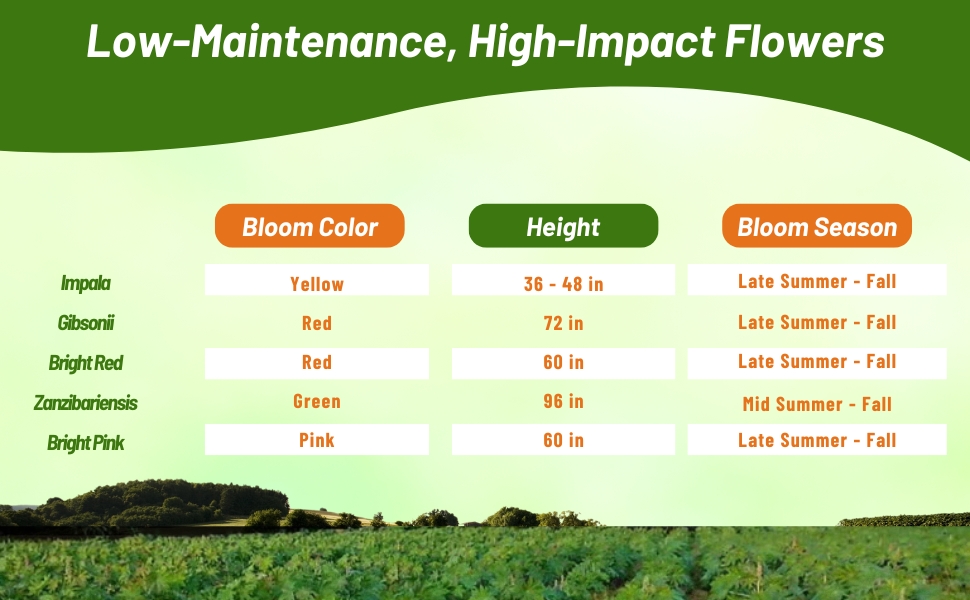
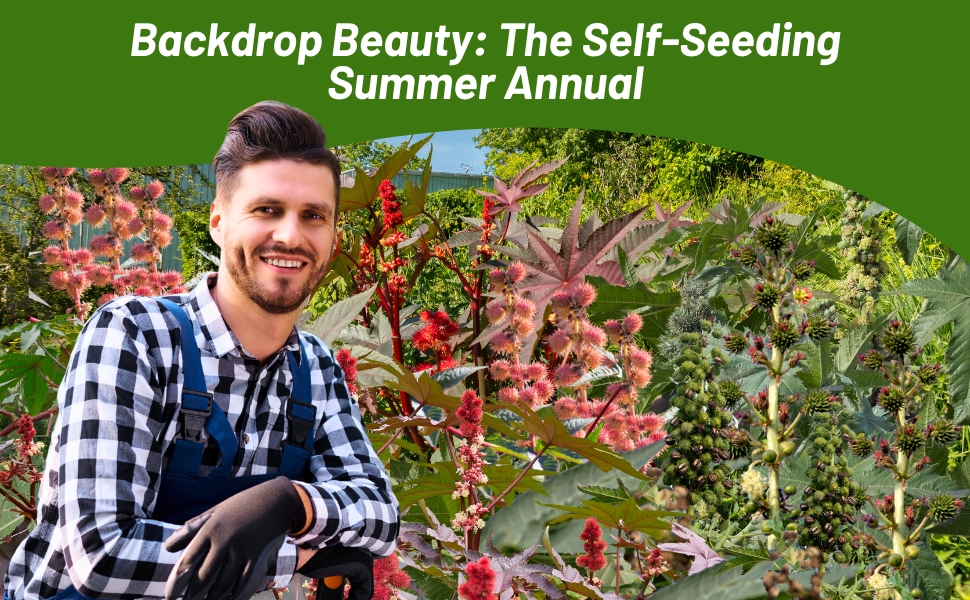
Castor Bean (Ricinus Communis Zanzibariensis) - Here is another incredible tropical annual that can be grown from Castor Bean seeds to give a dramatic display in the landscape. The Zanzibar plant achieves massive sizes in a single growing season, but it is not tolerant of frost, so in most areas it is grown as an annual.
NOTE: All parts of the plant, including the seeds, are poisonous. Eating the seeds may be fatal. This plant is not recommended if you have small children. Again if you have children that naturally put things into their mouths, you probably should avoid this plant. If you do decide to grow it, educate your children about the dangers of this plant.
Common Questions
Do castor bean plants come back year after year?
If you are planting in USDA Zones 9 – 11 your Castor bean plants will continue to return year after year.
Can you grow castor bean in containers?
Due to their size and quick growth habits it is not advisable to grow in containers.
Will castor bean plants repel mosquitos?
Castor bean plants have been used to repel mosquitos.
Will deer and other animals eat castor bean plants?
Most animals know to stay away from Castor bean plants. They are toxic to animals.
Planting Directions
TEMPERATURE
70 - 72F
AVERAGE GERM TIME
6 - 12 days
LIGHT REQUIRED
Yes
DEPTH
1/4 inch
SOWING RATE
1 - 2 seeds per plant
MOISTURE
Keep soil slightly moist but not wet, avoid soil drying out
PLANT SPACING
24 - 36 inches
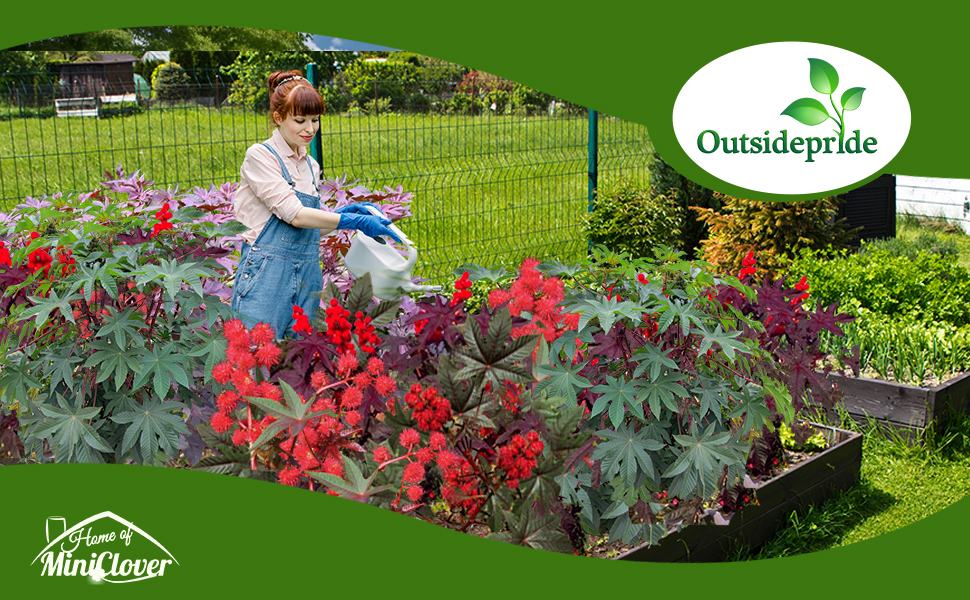
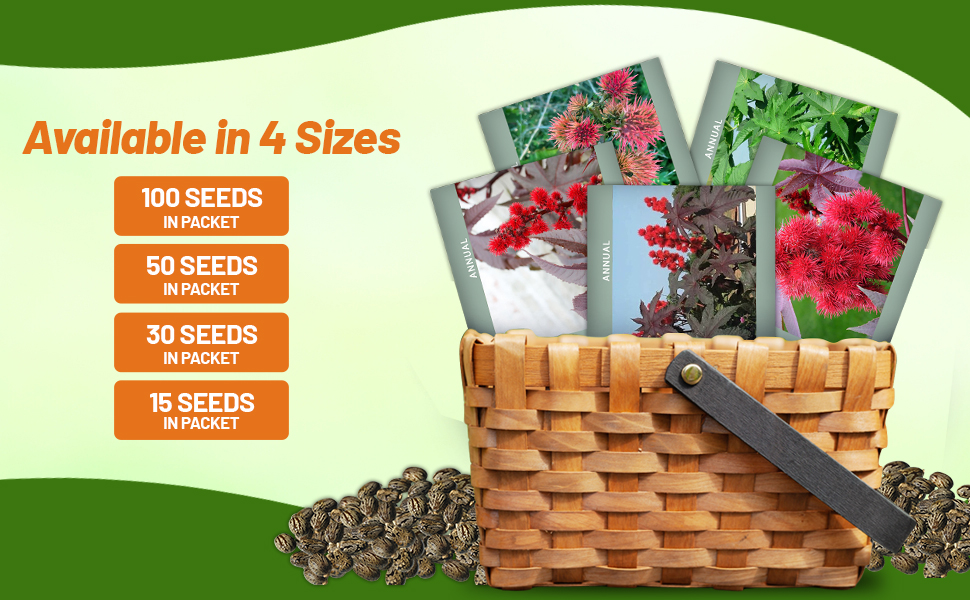
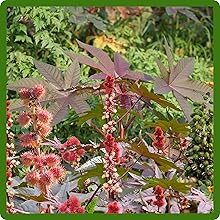
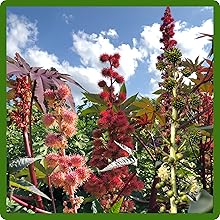
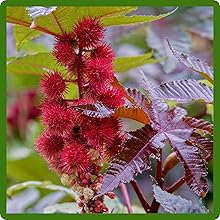
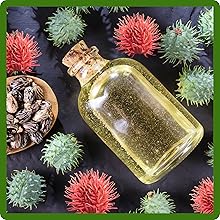
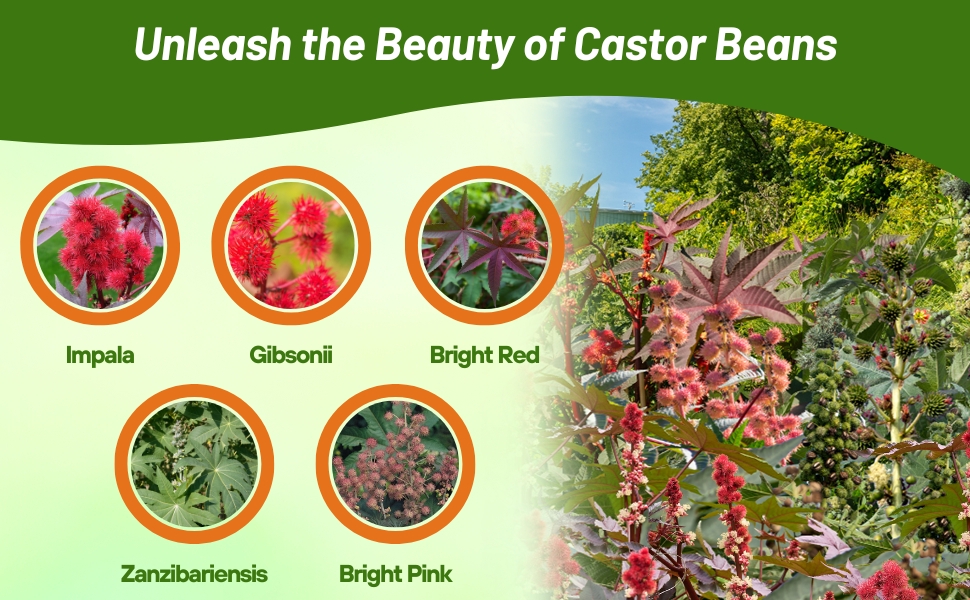
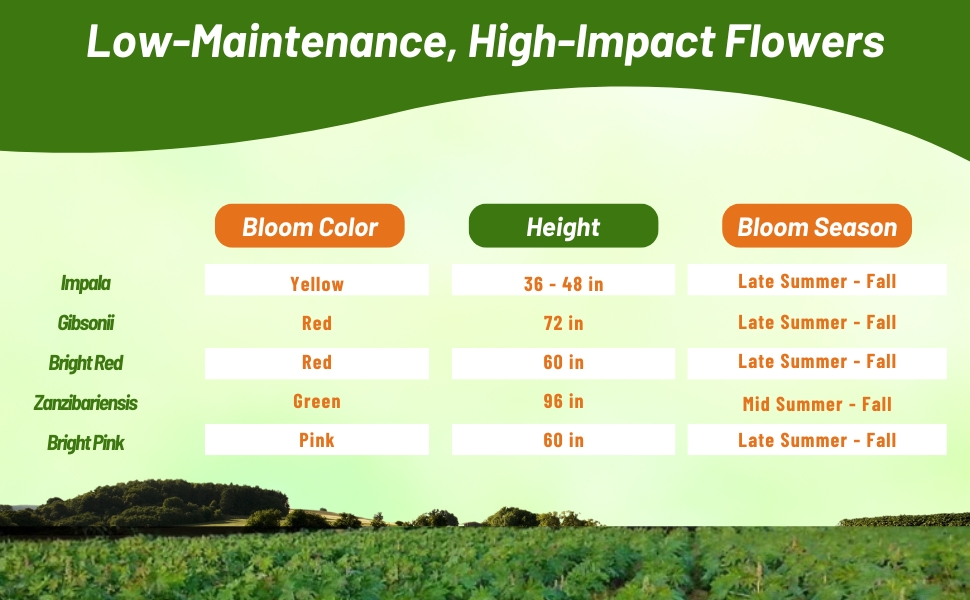
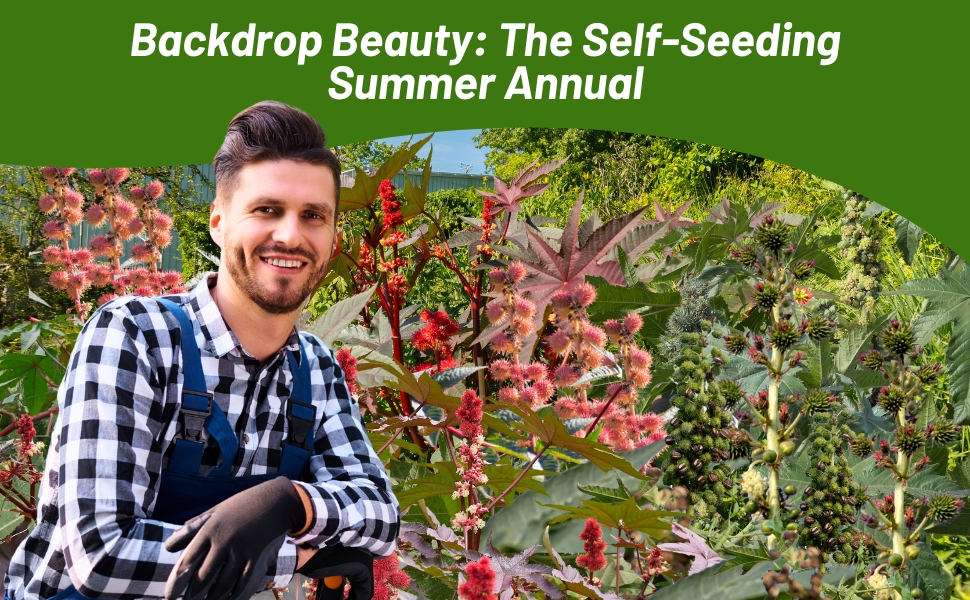
Castor Bean (Ricinus Communis Carmencita Bright Red) - Start Castor Bean seeds and grow this incredible, fast-growing shrub-like plant. If you need shade from intense summer sun, these plants are great for creating temporary shade plus they're extremely attractive and bring an exotic look to the landscape. These plants are known to re-seed themselves but are not considered invasive in most climates.
Castor Bean seeds can be started indoors 6 - 8 weeks before the last frost date or directly outdoors after frost season has passed. It is recommended to soak the Ricinus seeds for 24 hours in water to help break the seed coat. Cover the flower seed with 1/4 inch of soil and keep moist. Grow the plant in full sun and in soil that is rich and has been amended with organic matter. Care of the bright red Castor Bean plant would include staking the plant if needed, trimming the faded flowers to produce new blooms, and fertilizing every month (or adding a slow-release fertilizer at the time of planting). In the fall after the first frost, remove the plant and discard.
NOTE: All parts of the plant, including the seeds, are poisonous. Eating the seeds may be fatal. This plant is not recommended if you have small children. Again if you have children that naturally put things into their mouths, you probably should avoid this plant. If you do decide to grow it, educate your children about the dangers of this plant.
Common Questions
Do castor bean plants come back year after year?
If you are planting in USDA Zones 9 – 11 your Castor bean plants will continue to return year after year.
Can you grow castor bean in containers?
Due to their size and quick growth habits it is not advisable to grow in containers.
Will castor bean plants repel mosquitos?
Castor bean plants have been used to repel mosquitos.
Will deer and other animals eat castor bean plants?
Most animals know to stay away from Castor bean plants. They are toxic to animals.
Planting Directions
TEMPERATURE
70 - 72F
AVERAGE GERM TIME
6 - 12 days
LIGHT REQUIRED
Yes
DEPTH
1/4 inch
SOWING RATE
1 - 2 seeds per plant
MOISTURE
Keep soil slightly moist but not wet, avoid soil drying out
PLANT SPACING
24 - 36 inches
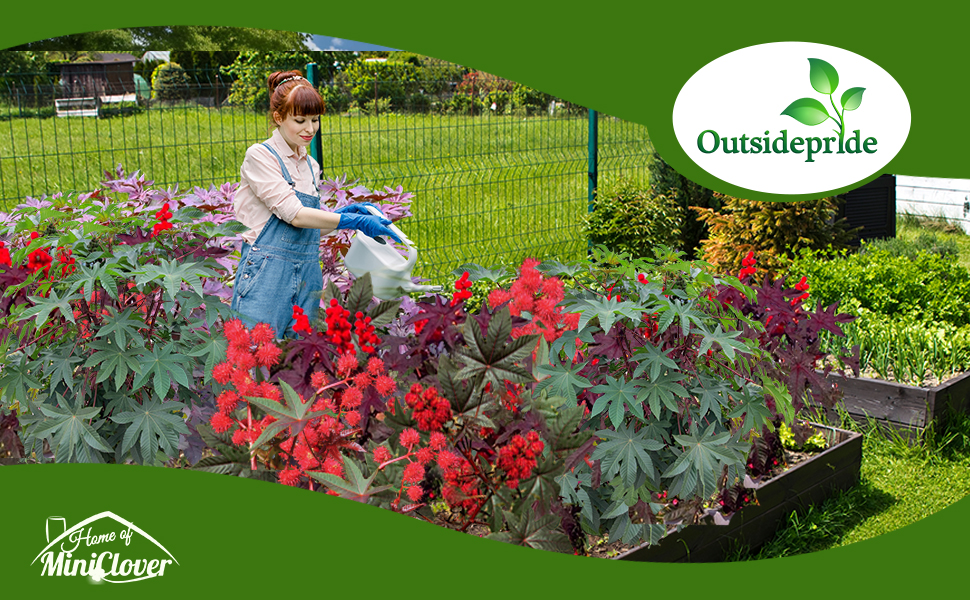
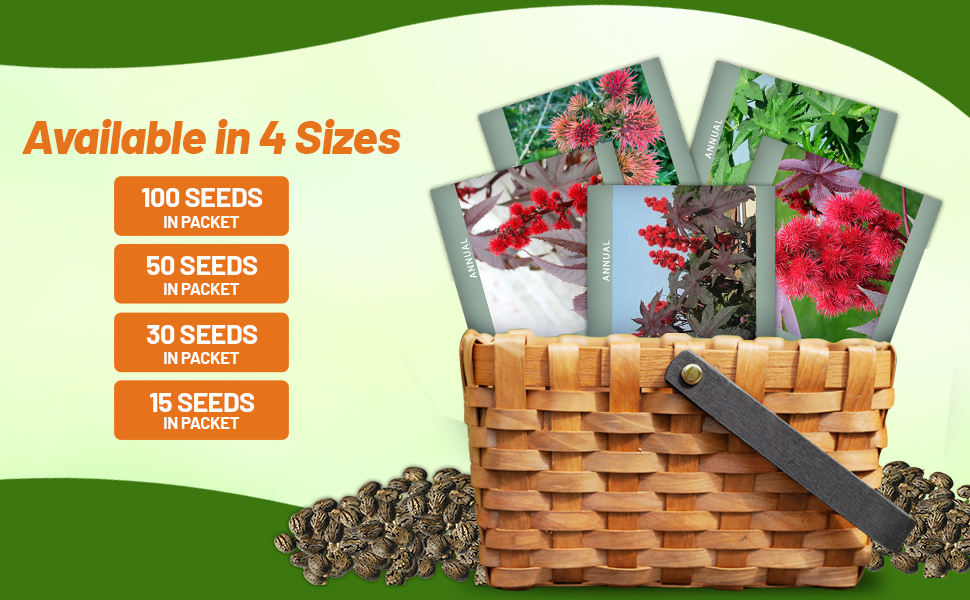
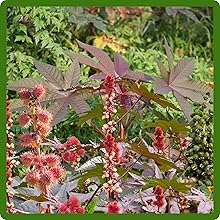
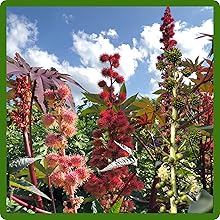
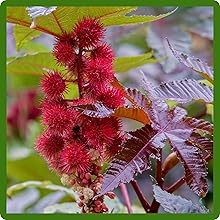
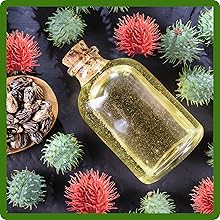
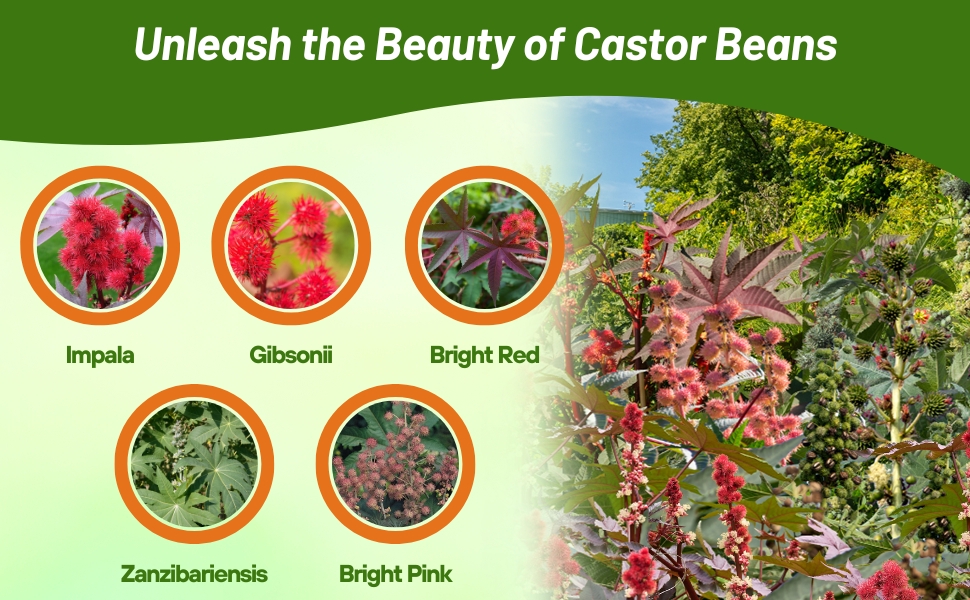
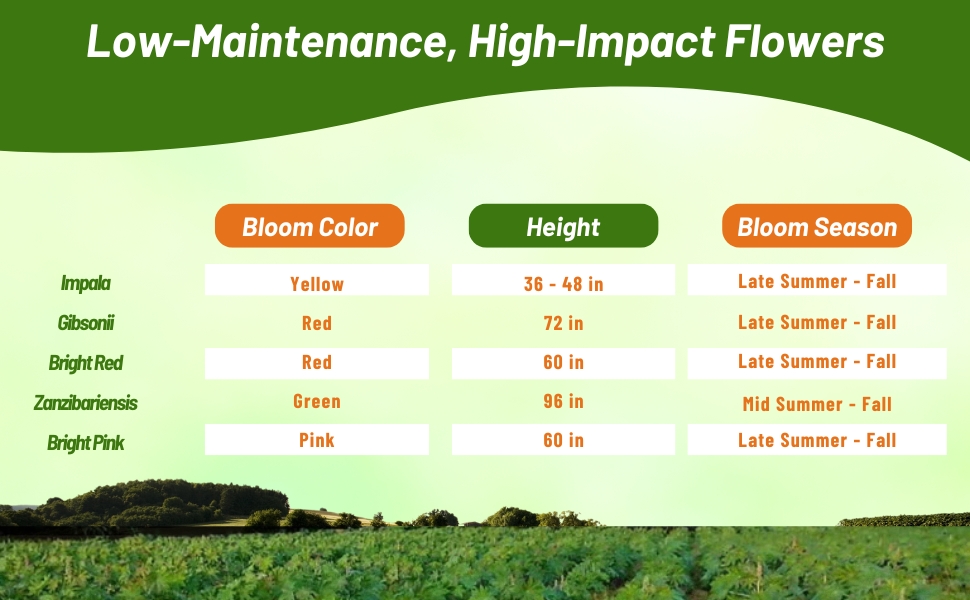
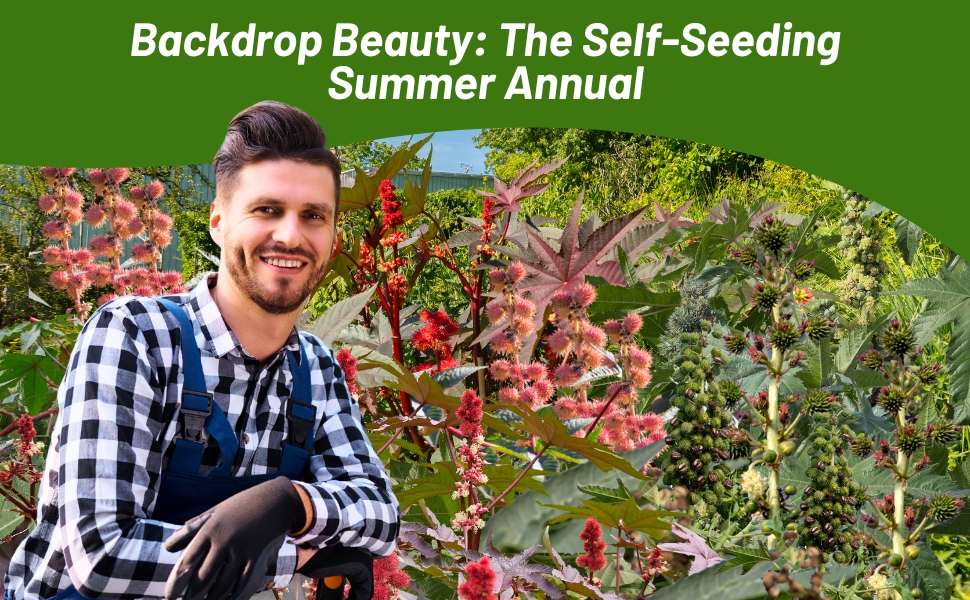
Castor Bean (Ricinus Communis Carmencita Bright Pink) - Add an exotic touch to your landscape and grow Castor Bean seeds. This amazing species grows as an annual in most climates, but it grows quickly and creates a large, lush foliage plant in no time.
NOTE: All parts of the plant, including the seeds, are poisonous. Eating the seeds may be fatal. This plant is not recommended if you have small children. Again if you have children that naturally put things into their mouths, you probably should avoid this plant. If you do decide to grow it, educate your children about the dangers of this plant.
Common Questions
Do castor bean plants come back year after year?
If you are planting in USDA Zones 9 – 11 your Castor bean plants will continue to return year after year.
Can you grow castor bean in containers?
Due to their size and quick growth habits it is not advisable to grow in containers.
Will castor bean plants repel mosquitos?
Castor bean plants have been used to repel mosquitos.
Will deer and other animals eat castor bean plants?
Most animals know to stay away from Castor bean plants. They are toxic to animals.
















